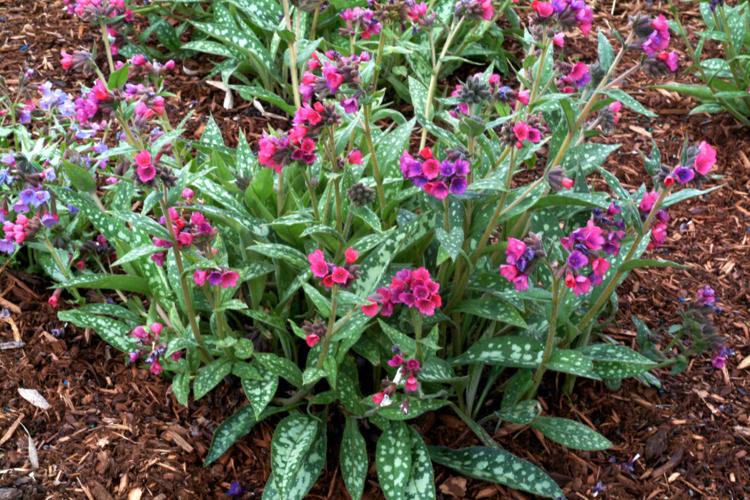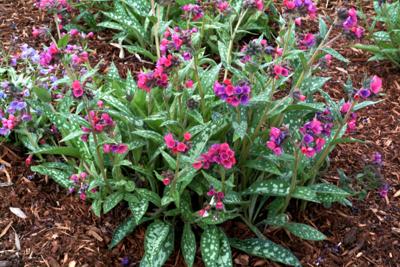If you live in an older neighborhood, chances are you have larger, mature trees that cast a lot of shade. Over time, your beautiful perennial beds full of sun loving plants, may not be looking so happy.
The words ‘full sun’ in the horticulture world, actually means six hours per day, at the peak times.
So, three hours in the early morning and three hours at the end of the day is not full sun.
Somewhere between 9 a.m. and 6 p.m. is the best time frame.
Full sun plants will bloom less, and the bloom colors may not be as vibrant in full or partial shade.
Usually the plant itself will lose vigor, bloom power and will not be as robust and overtime could croak as the shade increases.
So what are the solutions? Create new beds in sunny areas and move those sun lovers of course!
Space might not always allow for this, so perhaps changing the plants would be the best solution. When we think of shade plants, the beloved hosta is probably one of the first we think of, but there are many shade plants to choose from.
Astilbes are one of my shade favorites with their ferny foliage and spiky flower stems. There are many varieties with a height range from 18-42 inches. Their color range is pinks, reds, whites, cream and peachy.
Heuchera, aka Coral Bells also does well in full to part shade and their foliage comes in variety of colors ranging from coppers, reds, purples, blacks and of course greens. The foliage may also have distinctive veining or flecking.
Coral bells are easy to grow and propagate (divide) if they get too large. Here is a short list of half to full shade plants to consider:
■ Ferns
■ Cimicifuga aka Black Snakeroot — leave room it grows 4-7 feet, great plant for large spaces.
■ Tiarella aka foam flower, similar to coral bells but with bottlebrush type flowering stems.
■ Heucheralla — which is a cross between the Heuchera and the Tiarella.
■ Bergenia with its big round shiny leaves and stunning red fall color.
■ Convallaria aka Lily of the Valley — which can spread out so allow room, tiny fragrant bell flowers on shorter plants.
■ Pulmonaria aka Lungwort — yes, the name isn’t very lovely.
Lungwort was used back in the day to treat lung ailments. Because it resembles a cross section of a lung, it only stands to reason that its uses would be for that body part…right?
■ Some Clematis do well in half shade unlike most climbers.
■ Dicentra aka Bleeding Heart does well in in full to half shade
■ Some Dianthus aka Pinks will do well in half shade. Always best to analyze the amount of sun verses shade in your yard every few years. It’s always good advice to check the plant tags for the best site location for each potted plant you pick up or order. Shade plants don’t do well in full sun either!
One popular question I would hear when talking to folks about plants is “do they spread?”
The majority of your garden perennials will spread/increase at the base, creating a larger plant overtime. Some perennials like Perovskia aka Russian Sage, will spread by sending out rhizomes, with new baby plants popping up near the plant.
Usually, these new plants can be cut off from the mother plant, dug up and re-planted.
Perovskia will also do a little seeding in the garden, with random plants popping up.
The majority of the perennials sold today are hybrids or may be sterile and generally stay put as one plant. It’s when you order some random heirloom pack of seeds like Sweet Annie that you will know the true meaning of spreading in the garden — year after year after year.
This year was less than last year so I am making progress at eradication after about six years. It took about four years to get rid of the Chinese Lanterns.
Sweet Annie is actually an annual plant that readily reseeds itself. Sometimes they can be mistaken for perennials because they are back every year.
Strawberries are a good example of a plant that spreads around by stolons on top of the soil. Rhizomes are under the soil. So, do they spread? Depends on your definition — they all do in one form or another.
Stop by Drummers Garden Center for the Winter Farmer’s Markets, Saturdays from 10 a.m. to noon.
The final Winter Market is Feb. 10th. Are you interested in joining the Mankato Farmer’s Market? Applications can be found on our website at mankatofarmersmarket.com or email me at mankatofarmersmarket@gmail.com





























Commented
Sorry, there are no recent results for popular commented articles.